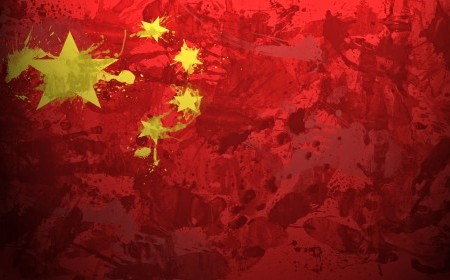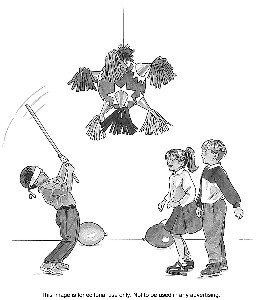Fortune Cookies and… Piñatas?
 Fact: The piñata was invented in China
Fact: The piñata was invented in China
Like many world traditions, the piñata was not actually invented in the country that made it most famous.
Though most associated with Mexico, the piñata is actually believed to have been invented in China. Commonly in the shape of an ox or cow and originally filled with seeds, it was included in Chinese New Year celebrations before the 1300s to ensure a good harvest for the coming year. The piñata (not yet called by this term, of course) would be struck until it broke and the seeds fell out, at which point the seeds would be burned and the ashes kept for good luck.
Sometime during the 1300s, the idea of the piñata moved to Europe from the Far East, morphing into a simple but fragile clay pot, referred to as a pignatta in Medieval Italian. Finally, in the 1600s, the pignatta was transplanted to Mexico, where monks combined the now Spanish tradition of animal-shaped vessels filled with seeds or other surprises with a local Aztec tradition of being blindfolded while making an offering to the gods. With just a bit of further refinement, every child’s favorite Latin-inflected party game soon evolved.
 The piñata is not the only export from China to have been reinvented by Europeans. A Chinese invention known as the compass facilitated subsequent European world exploration and dominance. The invention of paper allowed all written languages to communicate across boundaries which no longer existed, and helped civilizations to build libraries the likes of which were never before possible.
The piñata is not the only export from China to have been reinvented by Europeans. A Chinese invention known as the compass facilitated subsequent European world exploration and dominance. The invention of paper allowed all written languages to communicate across boundaries which no longer existed, and helped civilizations to build libraries the likes of which were never before possible.
A novelty invention known as gunpowder, led to all forms of firearms and determined the strategies of modern warfare until the invention of atomic and nuclear weapons. It also ultimately led to the current struggle against gun violence in the US and abroad. Fireworks are a related Chinese invention. We can also thank the Chinese for the wheelbarrow; the basic distillation processes for vinegar, beer, and wine; the kite; the hang glider; and silk.
If you want to find out more amazing Chinese facts (and non-facts), take our True and False Chinese quiz!


